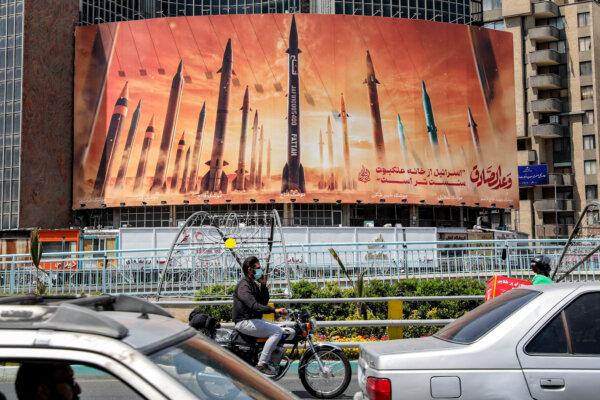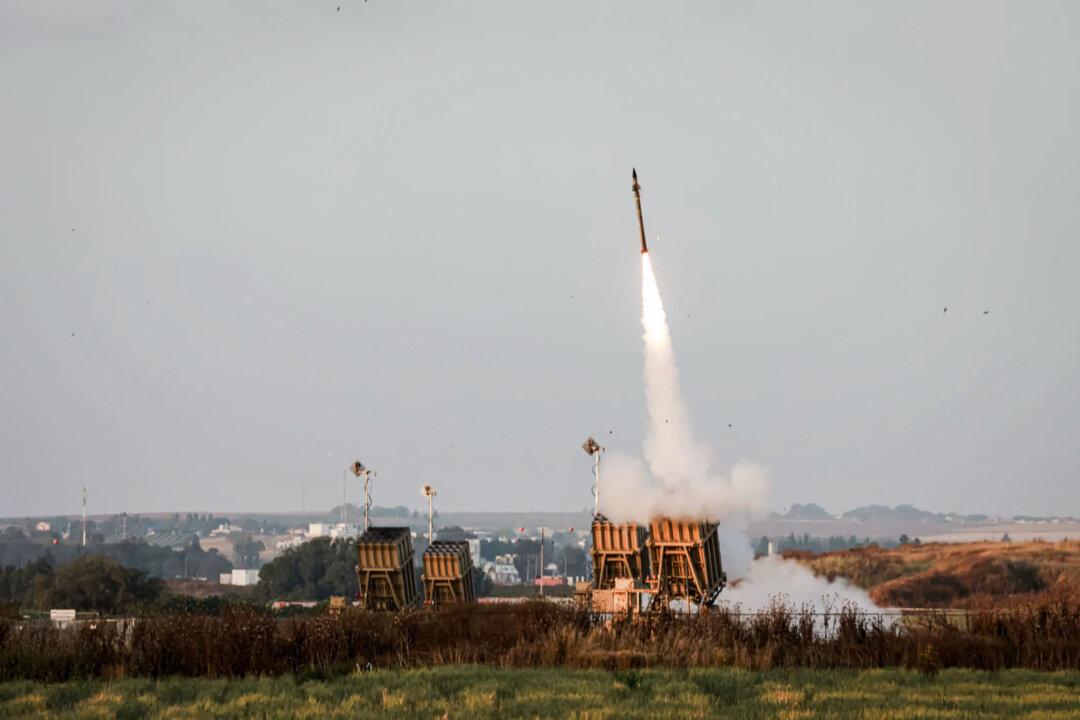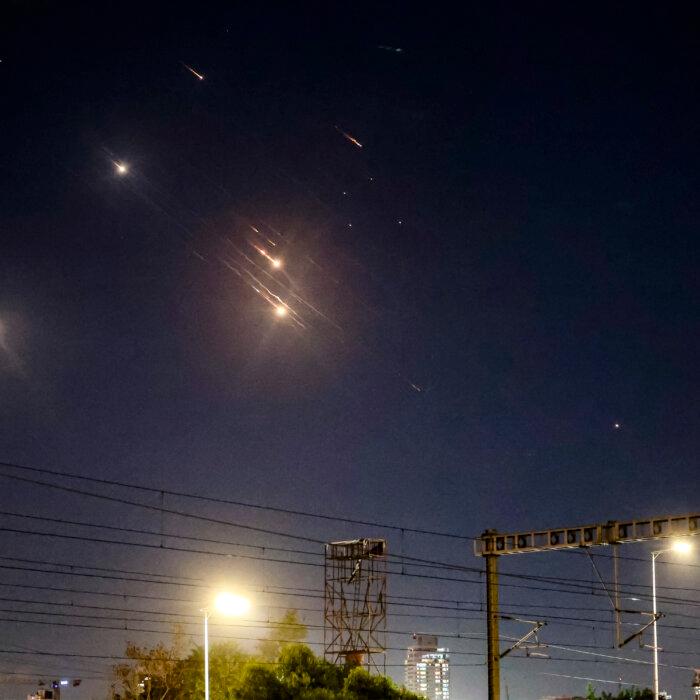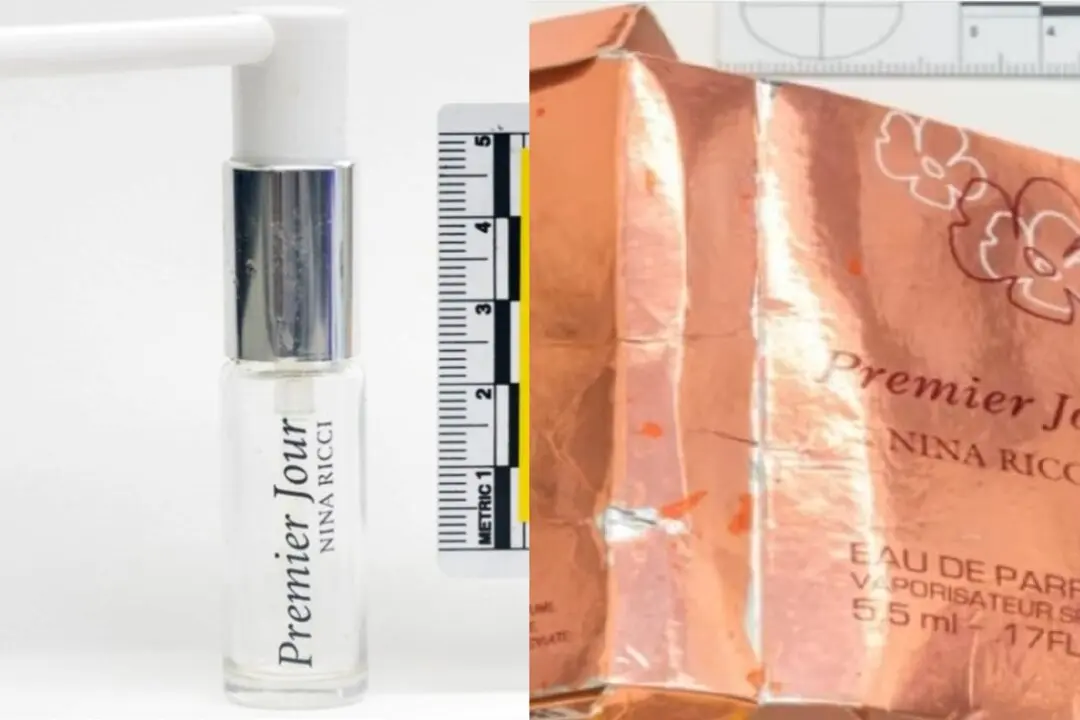How? The answer lies in Israel’s multi-layered missile defense system, built with the assistance of the United States.
Tim Ripley, a military analyst and editor of the Defence Eye website, said Israel’s different missile defense systems come under the umbrella of a single structure.
He told The Epoch Times: “The key thing is that all these different systems are integrated into a coherent network. They recognize that no one system has everything covered.”
Ripley said ballistic missiles go into space before dropping down. The first line of defense—known as the Arrow system—fires missiles that intercept the ballistic missiles at the tops of their trajectories. Then the next layer—David’s Sling—targets the missiles in “mid-atmosphere.” Those that make it past that layer are intercepted by the Iron Dome system, more commonly known for shooting down rockets fired by the Hezbollah and Hamas terror groups.
He said the overriding structure relies on artificial intelligence (AI)-driven algorithms.
“These AI-driven algorithms work out the trajectories of these missiles, estimate where they’re going to land, and then allocate specific batteries of missiles to intercept them with the best chance. So, it’s very advanced AI algorithms that process all this information, particularly if you’ve got 100 missiles in the air at once,” Ripley told The Epoch Times.
He pointed out a key difference between Israel and Ukraine.
“The Ukrainians don’t have as big an air defense network, they don’t have as many missiles to fight back with, and stuff gets through,” Ripley said.
According to the Pentagon, the U.S. Navy also assisted the Israelis in shooting down some of the missiles, and the United States and some other allies were able to plug into the Israeli system.
Iron Dome
Iron Dome, which was developed by Israel with U.S. support, is the most well known of the systems.It specializes in shooting down projectiles fired at short range and has been used countless times to defend against Hamas rockets fired from the Gaza strip and Hezbollah attacks from southern Lebanon.
It has intercepted thousands of rockets, and Israel says it has a success rate of more than 90 percent.
David’s Sling
Named after the biblical figure’s famous weapon, which killed the giant Goliath, David’s Sling is a rocket system designed to intercept medium-range missiles.David’s Sling fires interceptors, known as the Stunner or SkyCeptor, at incoming missiles. Each interceptor is worth at least $1 million.
It was also developed with assistance from the United States.
The Arrow
The Arrow system was designed to intercept long-range ballistic missiles, such as those that were fired at Israel by Iran on Oct. 1.The newest iteration, Arrow 3, has a range of 1,490 miles and has also been used to take down missiles fired by the pro-Iran Houthi rebels in Yemen.
Only missiles fired from eastern Iran are beyond its range.
On April 13, 2024, Arrow 3 was used to great effect during what Iran called Operation True Promise.
The Iranians fired 120 missiles, 170 drones, and 30 cruise missiles at Israel in retaliation for the Israeli bombing of their embassy in Damascus.

Patriot
The oldest layer of missile defense is the Patriot system, which was first used in 1991 to intercept Scud missiles that were fired by Iraq’s then-leader, Saddam Hussein, during the first Gulf War.Iron Beam
Israel is constantly developing new systems, with U.S. funding and technical support, to intercept emerging threats.The newest system, which is still in development, is called Iron Beam and, as its name suggests, is based on laser beam technology.
According to Israel, the high-energy laser weapon will be a game changer, as well as much cheaper to operate.
Lockheed Martin Chief Operating Officer Frank St. John was quoted as saying, “This unique capability will enhance Israel’s vital air and missile defense system with state-of-the-art laser technology, and we are honored by the opportunity to expand Lockheed Martin’s role as a security teammate for the state of Israel.”







